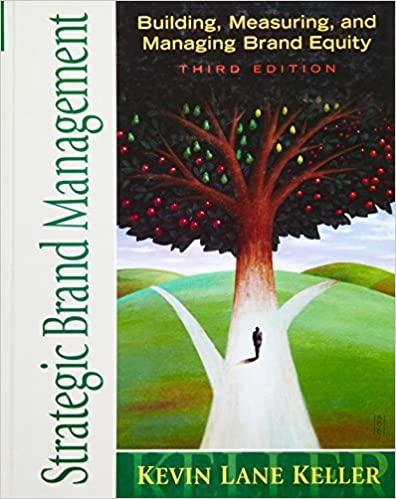Question
5. Watch the following hilarious video on company culture, which leaves many things to think about (https://www.youtube.com/watch?v=D6LUg-siJVs). Question: Critically analyze the case and discuss how
5. Watch the following hilarious video on "company culture," which leaves many things to think about (https://www.youtube.com/watch?v=D6LUg-siJVs).
Question: Critically analyze the case and discuss how to improve the organization culture based on the 10 characteristics of organizational culture
Below I provided the 10 characteristics of organizational culture:
According to Stephen P. Robbins and Timothy Judge, authors of a popular textbook on organizational behavior, there are 10 characteristics of organizational culture:
1. Member identity: The degree to which employees identify with the organization as a whole rather than with their type of job or profession. For example, project managers or team members might feel more dedicated to their company or project team than to their job or profession, or they might not have any loyalty to a particular company or team. As you can guess, an organizational culture in which employees identify more with the whole organization are more conducive to a good project culture.
2. Group emphasis: The degree to which work activities are organized around groups or teams, rather than individuals. An organizational culture that emphasizes group work is best for managing projects.
3. People focus: The degree to which management's decisions take into account the effect of outcomes on people within the organization. A project manager might assign tasks to certain people without considering their individual needs, or the project manager might know each person very well and focus on individual needs when assigning work or making other decisions. Good project managers often balance the needs of individuals and the organization.
4. Unit integration: The degree to which units or departments within an organization are encouraged to coordinate with each other. Most project managers strive for strong unit integration to deliver a successful product, service, or result. An organizational culture with strong unit integration makes the project manager's job easier.
5. Control: The degree to which rules, policies, and direct supervision are used to oversee and control employee behavior. Experienced project managers know it is often best to balance the degree of control to get good project results.
6. Risk tolerance: The degree to which employees are encouraged to be aggressive, innovative, and risk seeking. An organizational culture with a higher risk tolerance is often best for project management because projects often involve new technologies, ideas, and processes.
7. Reward criteria: The degree to which rewards, such as promotions and salary increases, are allocated according to employee performance rather than seniority, favoritism, or other nonperformance factors. Project managers and their teams often perform best when rewards are based mostly on performance.
8. Conflict tolerance: The degree to which employees are encouraged to air conflicts and criticism openly. It is very important for all project stakeholders to have good communications, so it is best to work in an organization where people feel comfortable discussing differences openly.
9. Means-ends orientation: The degree to which management focuses on outcomes rather than on techniques and processes used to achieve results. An organization with a balanced approach in this area is often best for project work.
10. Open-systems focus: The degree to which the organization monitors and responds to changes in the external environment. As you learned earlier in this chapter, projects are part of a larger organizational environment, so it is best to have a strong open-systems focus.
Step by Step Solution
There are 3 Steps involved in it
Step: 1

Get Instant Access to Expert-Tailored Solutions
See step-by-step solutions with expert insights and AI powered tools for academic success
Step: 2

Step: 3

Ace Your Homework with AI
Get the answers you need in no time with our AI-driven, step-by-step assistance
Get Started


